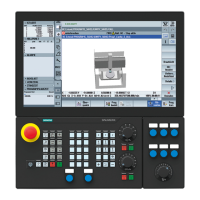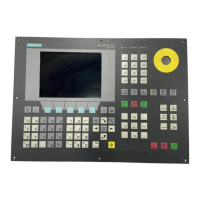Detailed description
2.14 Useful tips on programming with STEP 7
Power Line Basic PLC Program (P3)
2-264 Function Manual, 08/2005 Edition, 6FC5397-0BP10-0BA0
2.14.5 Strings
General
The STRING data type is required by certain services of the basic program. For this reason,
some additional facts about the string structure and general handling procedures for
parameter assignments are given below.
Structure of STRING
A data of type STRING is generally stored (defined) in a data block. There are two methods
of defining a string:
1. Only the data type STRING is assigned to a variable. The STEP7 compiler automatically
generates a length of 254 characters.
2. Data type STRING is assigned to a variable together with a string length in square
parenthesis (e.g., [32]). With this method, the STEP7 compiler generates a string length
corresponding to the input.
Two bytes more than prescribed by the definition are always stored for variables of the
STRING data type. The STEP7 compiler stores the maximum possible number of characters
in the 1st byte. The 2nd byte contains the number of characters actually used. Normally, the
useful length of the assigned string is stored in byte 2 by the compiler. The characters (1
byte per character) are then stored from the 3rd byte onwards.
String parameters are generally assigned to blocks of the basic program by means of a
POINTER or ANY. Such assignments must generally by made using symbolic programming
methods. The data block, which contains the parameterizing string, must be stored in the
symbol list. The assignment to the basic program block is then made by means of the
symbolic data block name followed by a full stop and the symbolic name of the string
variable.

